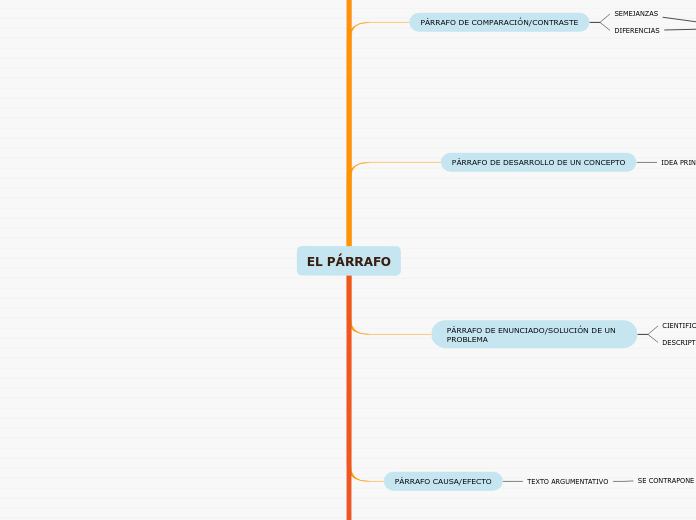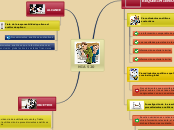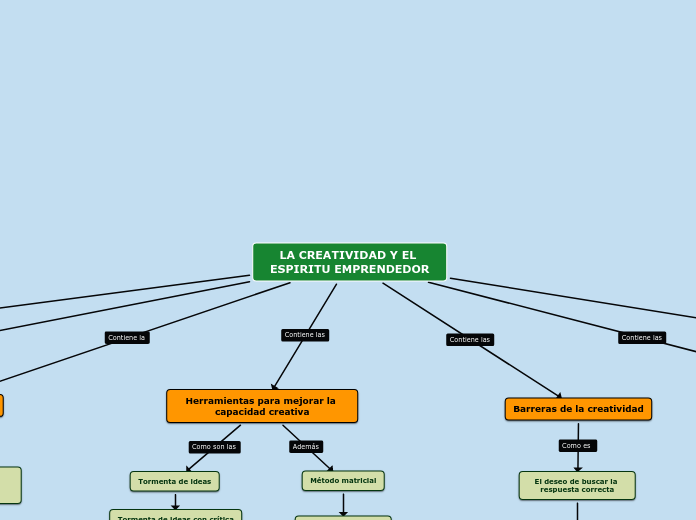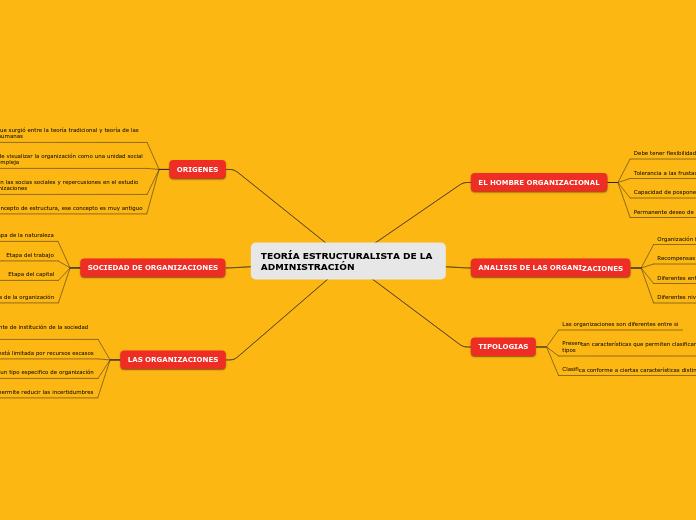RELACIÓN
CAUSA/EFECTO
ERRORES
2) INTRODUCIR ENTRE LAS CAUSAS, ELEMENTOS QUE NO CONTRIBUYEN AL EFECTO
1) DESCRIBIR UNA RELACIÓN, CAUSA/EFECTO POCO CONVENIENTE
VARIANTES
D) OMISIÓN DEL PROBLEMA
C) OMISIÓN DE SOLUCIÓN
B) CONTRAPOSICION DE SOLUCIONES
A) FORMA COMPLETA
CONSTITUIDOS POR PARTES
EXPONE UNA SOLUCIÓN
PRESENTA UN PROBLEMA
CONSTITUIDOS
PÁRRAFOS COMPLEJOS
PERIODOS ENTEROS
FRASES BREVES
PALABRAS AISLADAS
SEGÚN NUMERO DE CATEGORÍAS
TIPOS DE ESQUEMAS GENERAL
B) DESARROLLO POR DESCRIPCIONES SEPARADAS
CADA OBJETO ES ANALIZADO POR SEPARADO
CONSTRUYE
DESCRIPCIONES
A) DESARROLLO POR DESCRIPCIONES CONTRAPUESTAS
ANALIZA POR SEPARADO
COMPARANDO DOS O MAS OBJETOS
OBJETOS
IDEAS
SITUACIONES
º
IDEAS PRINCIPALES
EL PÁRRAFO
To name your story, you have to think about the overall message and what you want your audience to understand from the story. Also, make it relevant and easy to remember.
CONCLUSIONES
The ending of a story is essential. We all know that if the ending is weak, what happened before loses its importance. So make it unpredictable, but fair. A resolved ending answers all the questions and ties up any loose threads from the plot.
CONCLUYE UN ESCRITO
This is the moment when the main character surpasses the last obstacle and finally faces their greatest challenge.
The climax usually follows one of these patterns:
- realization
- resolution
- choice
Type in your answer.
CONCLUSIÓN-ANALOGÍA
ESTABLECE UN PARAGÓN ENTRE EL TEMA TRATADO Y UNA SITUACIÓN QUE OFRECE SIMILITUDES CON ÉL.
CONCLUSIÓN-INTERROGANTE
PLANTEA AL FINAL DEL ESCRITO CUESTIONES NO RESUELTAS, PROBLEMAS ABIERTAS A LAS HIPÓTESIS DEL FUTURO.
CONCLUSIÓN-CITA
UTILIZA CITAS DE TODOS LOS TIPOS SIEMPRE QUE SE ADAPTE AL TEMA TRATADO.
CONCLUSIÓN CON BREVES AFIRMACIONES
REPRESENTA EL VERDADERO FINAL DEL TEXTO Y PLANTEA UN ECO O RESONANCIA
CONCLUSIÓN CON ANÉCDOTA
RECUPERA EL HILO DE TODO EL TEXTO A TRAVÉS DE ELEMENTOS NARRATIVOS O VISUALES QUE ATRAEN FANTASÍA.
CONCLUSIÓN-SÍNTESIS
PRESENTA UN BREVE RESUMEN DE LAS IDEAS PRINCIPALES DEL ESCRITO
INTRODUCCIÓN
The middle of the story is where you add layers of complications that will lead to the end. Reveal more about the character's journey. Did their personality go through changes? How did they overcome the challenges? And as you build up the story’s central conflict, make it more personal to that character. Also, from the middle act, you have to lead into the final act.
TIPOS
Each story has a main character and that character usually needs to solve a problem or challenge. The character's challenge is the one that creates tension throughout the story.
DESCRIPCIÓN-ANALÓGICA
ESTABLECE COMPARACIÓN ENTRE EL TEMA DEL ESCRITO Y OTRA SITUACIÓN
INTRODUCCIÓN INTERROGANTE
DESCRIBE SU DESARROLLO
INTRODUCCIÓN-CITA
FRASES PRONUNCIADAS O ESCRITAS POR PERSONAS FAMOSAS.
PROVERBIOS
VERSOS
INTRODUCCIÓN CON BREVES AFIRMACIONES
Type in any other challenges which other characters in the story need to face.
ESTILO PERIODÍSTICO
INTRODUCCIÓN CON ANÉCDOTA
INCLUYE UNA HISTORIA
INTRODUCCIÓN-SÍNTESIS
In most stories, there are 3 challenges. The number 3 is a mystical number symbolizing completeness. Try to come up with interesting challenges with which your character needs to struggle.
See a few examples below:
- turns into a werewolf at night
- is sent back in time
RESUMEN DEL TEMA
PÁRRAFO CAUSA/EFECTO
TEXTO ARGUMENTATIVO
SE CONTRAPONE
PERIODOS
FRASES
APARTADOS
PÁRRAFO DE ENUNCIADO/SOLUCIÓN DE UN PROBLEMA
DESCRIPTIVO
CIENTIFICO
PÁRRAFO DE DESARROLLO DE UN CONCEPTO
IDEA PRINCIPAL
FINAL
PRINCIPIO
PÁRRAFO DE COMPARACIÓN/CONTRASTE
DIFERENCIAS
SEMEJANZAS
PÁRRAFO DE SECUENCIA
SE ORDENA SEGÚN CRITERIO U ORDEN CRONOLÓGICO
DESCRIPCIÓN
ORDEN TEMPORAL
ORDENADO
LETRA SUCESIVA
NÚMERO
TIPO CIENTÍFICO
PÁRRAFO DE ENUMERACIÓN
In the beginning of the story (or the exposition), you will need to introduce the setting and characters. You might also want to introduce the main conflict. This part of the story is important because it gives the reader necessary background information and maybe even a first insight into a character’s personality.
DESCRIBE
Characters are essential to a good story. Usually, the protagonist(s) is/are the most affected by the plot. Introduce a character by focusing on their actions, interests, and occupation, as the physical appearance doesn't make a difference in most cases.
FRASE ORGANIZADORA
FRASE/ENCUADRAMIENTO
What is your character's main goal?
fight Evilfind lovedefeat his/her enemyrule the worldmake friendstime travelmake an awesome discoveryOther
SINTETIZA
FRASE/SÍNTESIS
Which traits best describe the character's personality? Choose more if necessary:
introvertedloyalkindindependentquick-thinkingadventuresomeidealisticsweet-naturedcalmrisk-takercreativewittystrictfussyweirdclumsyharshaggressivecarelessclingingcowardlycrueldeceitfulimpulsiveOther
RECOGE
ANTICIPA
FRASE RECUENTO
Choose the type of your chacter:
Protagonist (main character)Antagonist (main character's opponent)Flat (stereotypical character)Round (his/ her personality develops throughout the story)Static (doesn't evolve as a person throughout the story)Dynamic (dramatical change in personality)Confidant (the main character trusts him/ her)Foil (contrasting character who enhances the personality of another character)Other
ELEMENTOS
PROCEDEN
SIGUEN
HECHO
IDEA
OBJETO
PERSONAS
Type in the name of your character.










